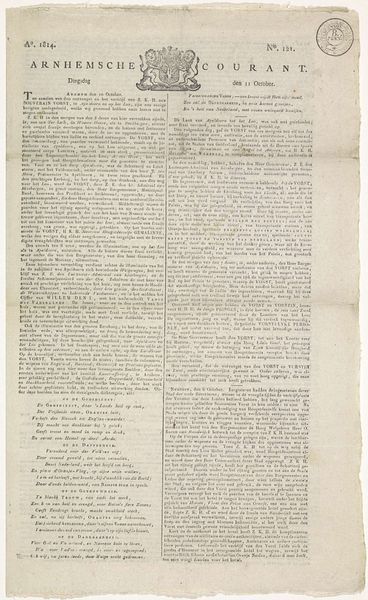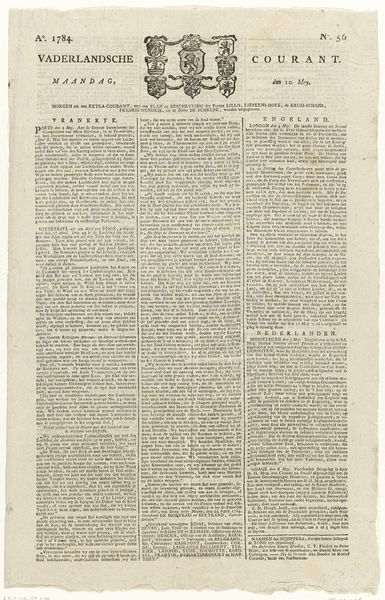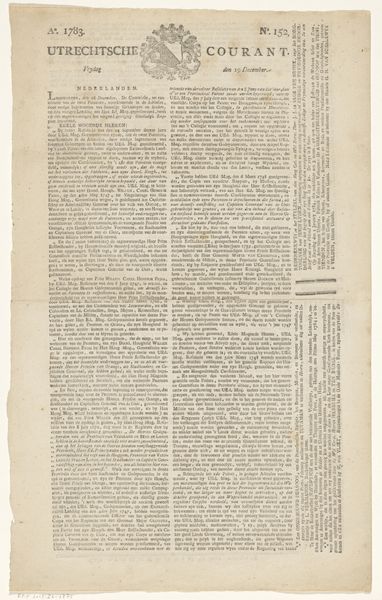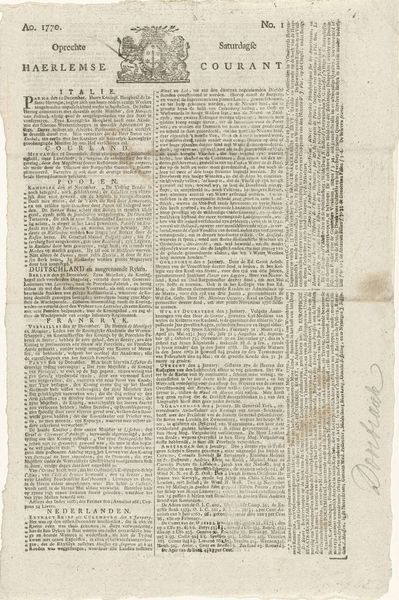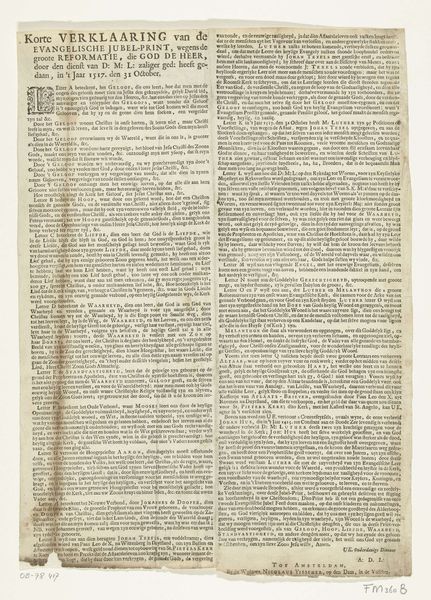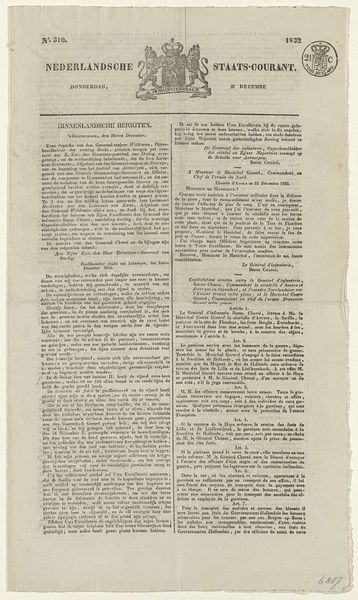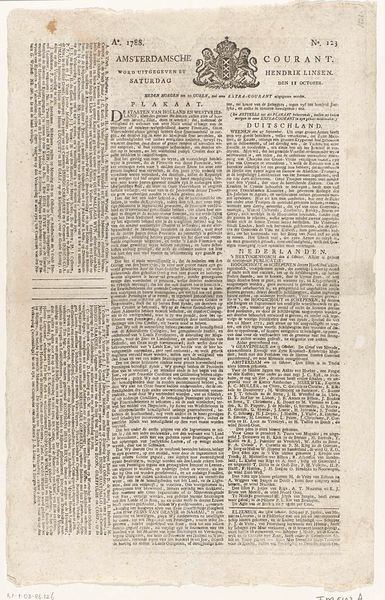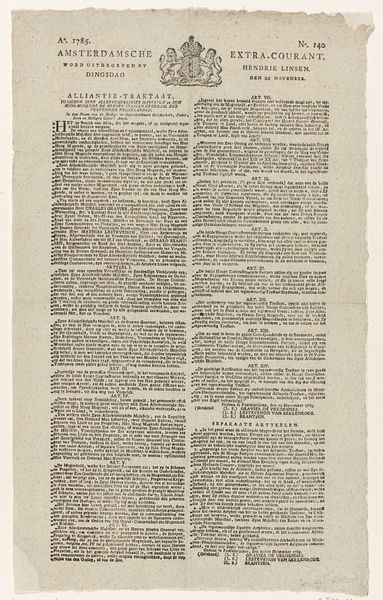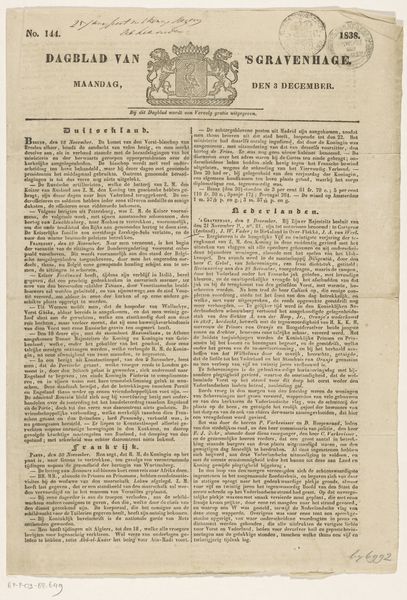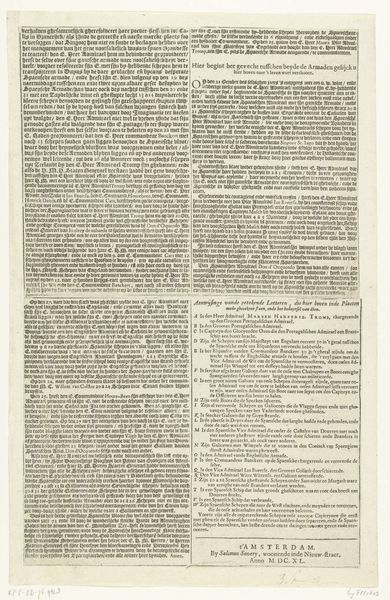
graphic-art, print, paper, typography
#
graphic-art
#
dutch-golden-age
# print
#
paper
#
typography
Dimensions: height 460 mm, width 275 mm
Copyright: Rijks Museum: Open Domain
Editor: Here we have J. van Bonga's *Amsterdamsche Courant, 22 december 1830,* a typographic print from possibly 1831. It's striking how clearly it evokes a bygone era simply through its layout and the density of the text. What do you see in this piece? Curator: What strikes me is how this newspaper page acts as a cultural artifact, a time capsule holding the collective memory of its readers. Each headline, each article, functions like a symbol, triggering associations with the events, concerns, and aspirations of that specific moment in time. What do you make of the symbolic importance of printed text? Editor: I suppose the act of printing something transforms it, gives it an authority it wouldn't have otherwise, like turning spoken word into sacred scripture. What I wonder about is whether it was actually read? All those tiny fonts and long paragraphs. Curator: Good question! Perhaps the real symbolic meaning is the ritualistic consumption of information. The very act of holding this paper, scanning the dense text, reinforced a sense of belonging, of being informed and connected to the broader community and what would a visual component, if one were present, add to the symbolism? Editor: I guess it would be less about the community and more about spectacle? Another way of grabbing attention and asserting the power or validity of whatever’s being portrayed? I had never thought about it that way. Curator: Indeed, and by considering the evolution of symbols within visual media, we can trace shifts in cultural values and understand the ongoing dialogue between past and present. It offers an opportunity to reflect on how media shapes perceptions. Editor: I never expected a simple newspaper page could contain such depth!
Comments
No comments
Be the first to comment and join the conversation on the ultimate creative platform.
